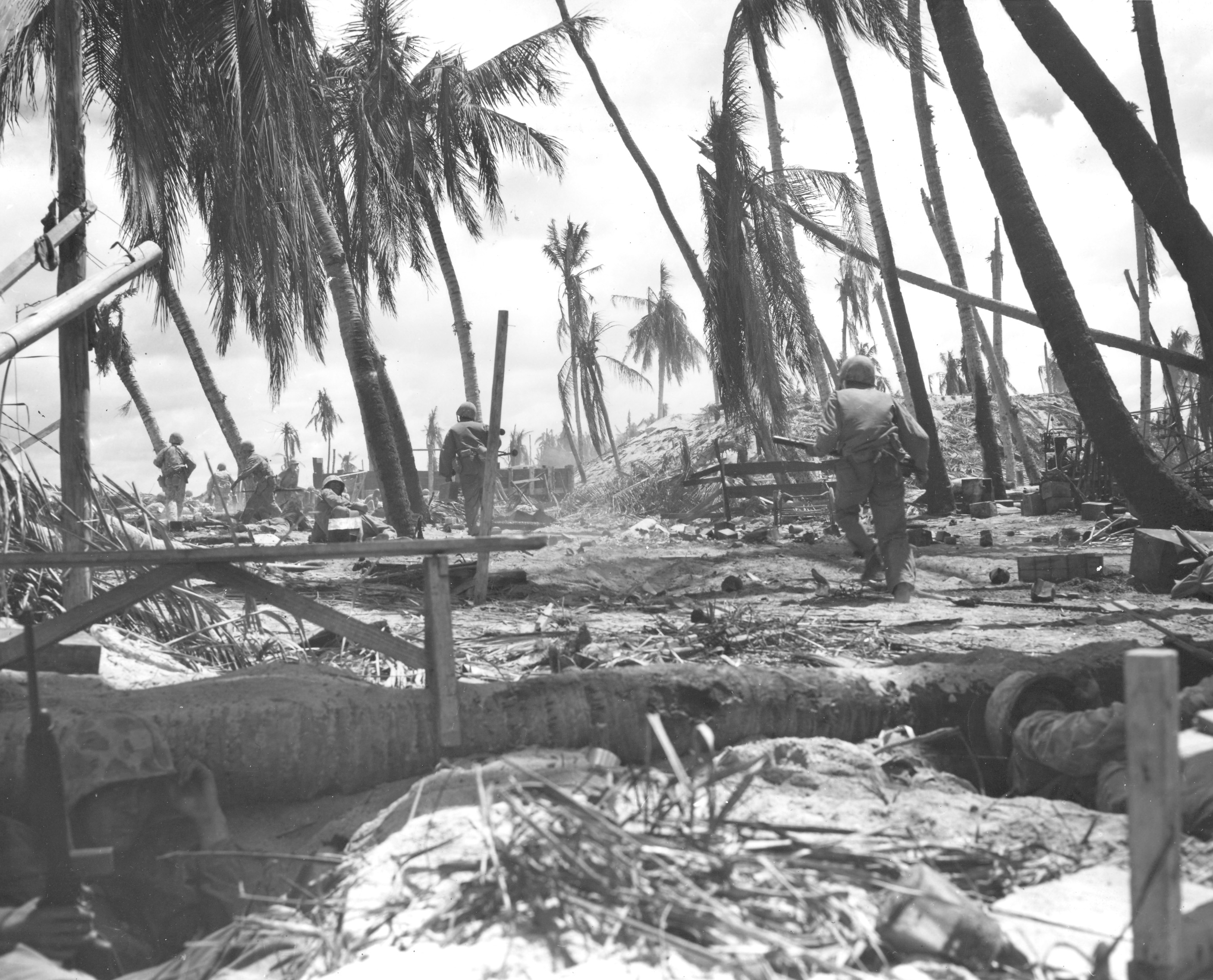Seventy-seven years ago, U.S. Marines launched a daring and most dangerous amphibious assault against Tarawa in the Central Pacific. The bitter battle lasted just 76 hours, but the price in lives and the number of wounded was astounding and sobering. I know. I fought there.
In just three days of savagery, 997 Marines were killed, with another 2,233 wounded. Eighty-eight went missing and were presumed dead. Also killed were 30 sailors (mostly medical personnel), with another 59 wounded. Total casualties: 3,407.
Japanese casualties? Rear Adm. Keiji Shibasaki, commander of Tarawa, had boasted to his 4,800 troops that “a million Americans couldn’t take Tarawa in 100 years.” The enemy, who just wouldn’t quit, had to be bombed, blasted and burned out of their formidable strongholds and individual burrows. Only 17 Japanese survived.
The objective in the equatorial Tarawa atoll was a tiny island called Betio, home to a Japanese bomber strip that posed a critical threat to Allied shipping lanes from Hawaii to Australia. According to the Marine Corps, Betio was the most heavily defended Pacific island ever invaded by Allied forces. Steel and concrete barriers, minefields and barbed wire protected the three landing beaches. Nearly 500 heavily fortified pillboxes dotted the island. Also present were fearsome turret-mounted 8-inch guns, coastal defense guns, and anti-aircraft and antiboat weapons. Selected to take Tarawa was the 2nd Marine Division, which had been bloodied at Tulagi and the moist green hell that was Guadalcanal.
On November 19, the hot night before the Tarawa landing, we sat around cleaning our weapons on the troopship Zeilin. The tension was palpable. I looked around at the anxious faces and thought, Jeez, but we are a bunch of young punks. Most of us were in our late teens or early 20s. I had just turned 21, having enlisted at 19. A few of the calmer Marines dozed, but no one really slept. Some read magazines while others wrote last-minute letters.
About 10 miles from shore, we were ordered over the ship’s side and down the cargo nets into the bobbing amtracs, armored amphibious tractors that were slow but capable of moving ashore in moderate surf. The amtracs steadily advanced on the island. They formed three long waves at 300-yard intervals, followed by two waves of Higgins boats. We were about 50 yards from shore when the terrific uproar of battle began in earnest. The din, though horrendous, was most welcome. It came from Navy dive-bombers laying their death-dealing eggs on the smoking island. Fighters strafed the beaches. Battleships, cruisers and destroyers added to the deafening cacophony as they belched salvo after murderous salvo.
The amtrac crunched onto the sand and lumbered up a few yards.
“Out! Everybody out!” screamed our squad leader, Randy Johnson. We scrambled over the side, hitting the soft wet sand with Johnson bellowing, “Damn it, everybody spread out and move forward! Go, go, go!”
I sprinted ahead with several others to a shell hole about 20 yards inland. We huddled at the bottom, mindful of machine-gun bullets zipping overhead, till the return fire stopped. Then we decided to move out. As I ran, that damn machine gun came alive, and bullets went chip-chip-chip-chip around my feet. I saw a small opening into an enemy dugout and dove into it. Luckily, there were no Japanese soldiers at home.
The day wore on, but fear never left me. I had a constant, almost metallic taste in my mouth. I was exhausted and noticed that my muscles were extremely tight. It was almost impossible to relax in the sauna-like heat.
After a while, I left the dugout, scurried to one side and dropped into another shell hole. Four other Marines were there. One had been wounded in the groin. We conferred and agreed he needed immediate attention. Two Marines volunteered to run for a stretcher. Dusk was approaching by the time the pair returned. We loaded the wounded Marine onto the stretcher and moved out. As we neared the beach, other Marines appeared almost as shadows.
Suddenly, an explosion lifted and then slammed me to the ground. My buttocks and thighs burned with pain from the jagged pieces of an enemy hand grenade. Fellow Marines swiftly killed the thrower, who was concealed in a spider hole. Soon stretcher-bearers appeared, and a corpsman injected morphine into my pain-ridden body. The agony subsided as phantom hands carried me to an aid station on the beach.
After a fitful night I was evacuated from the end of a pier to a waiting Higgins boat for transfer to a troopship. On the way to the pier I had seen unbelievable carnage. Marine and Japanese dead, some tangled together, were everywhere. Bloated bodies floated by. I saw several knocked-out Marine tanks, along with numerous disabled amtracs. Japanese gun emplacements were shattered and still smoking.
Many veterans still pay a painful price for their service. I have had several hospital stays since my discharge. But I’m not complaining. How can I, when others suffered much more horrible wounds? At least I’m alive, unlike those courageous young Marines whose lives were cut short in their prime.
I have passed my Purple Heart and campaign medals to my 18-year-old grandson, Nickie. I fervently hope he never, ever earns any war medals of his own.
Originally published in the December 2008 issue of Military History. To subscribe, click here.





